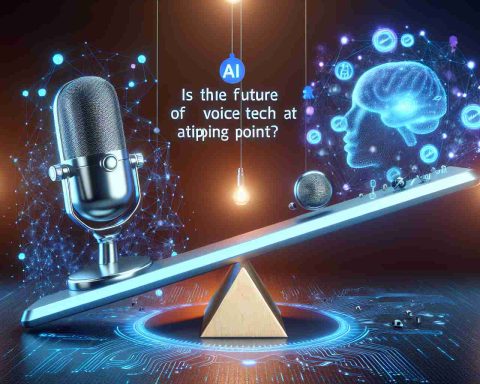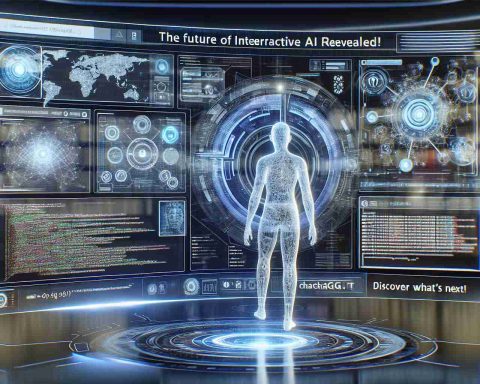On September 12, the American startup OpenAI revealed its latest artificial intelligence foundation model, named ‘o1’. This innovative model enhances logical reasoning capabilities, enabling it to tackle complex tasks in fields like science, coding, and mathematics—outperforming previous models in difficult problem-solving.
Available immediately through OpenAI’s interactive AI platform, ChatGPT, the ‘o1’ model demonstrates a remarkable 83% accuracy on preliminary problems from the International Mathematical Olympiad. This performance significantly surpasses the mere 13% accuracy of its predecessor, GPT-4o. Furthermore, the new model shows advanced capabilities in challenging programming tasks, achieving results that align with the precision typically seen in doctoral-level research.
OpenAI’s researcher explained that the impressive accuracy is attributed to a method known as “chain of thought” reasoning, which involves breaking down complex issues into manageable logical steps. The training process involved simulating a human-like approach to problem-solving, where the AI devotes considerable time to thinking through problems before generating answers. This approach allowed ‘o1’ to refine its thought processes, explore different strategies, and learn from its mistakes effectively.
In an era where rapid advancements in AI are reshaping industries, OpenAI’s ‘o1’ model is poised to make significant contributions across various domains, underscoring the potential of artificial intelligence to address increasingly complex problems.
OpenAI Launches ‘o1’: A New Era in AI Problem-Solving
On September 12, OpenAI unveiled its latest groundbreaking AI model named ‘o1’, which pushes the boundaries of artificial intelligence capabilities. This model not only enhances logical reasoning but also integrates a variety of learning techniques, making it a multi-faceted tool in the realm of AI.
Key Features and Performance Metrics
In rigorous tests, ‘o1’ has scored a remarkable 83% accuracy on complex problems from the International Mathematical Olympiad, a testament to its advanced problem-solving capabilities. This achievement is unparalleled by its predecessor, GPT-4o, which only managed a 13% accuracy on similar challenges. The model excels in programming and computational tasks, equating its performance with the precision expected of doctoral-level researchers.
Additionally, ‘o1’ employs a novel training regimen that incorporates reinforcement learning from human feedback (RLHF), further refining its output quality. This dual approach ensures that the AI does not merely provide correct answers, but also understands the reasoning behind them, allowing it to generate nuanced and contextually relevant responses.
Important Questions and Answers
1. What are the primary applications of the ‘o1’ model?
– The ‘o1’ model can be utilized in education, where it assists students with complex mathematical and coding problems, as well as in professional fields like scientific research and software development.
2. How does ‘o1’ differ from previous AI models?
– Unlike earlier models, ‘o1’ employs “chain of thought” reasoning, enabling deeper engagement with problems and a structured approach to arriving at solutions, rather than simply delivering answers.
3. What industries can benefit from ‘o1’?
– Industries such as finance, healthcare, and education stand to benefit by leveraging ‘o1’ for data analysis, predictive modeling, and educational tools.
Challenges and Controversies
Despite its impressive capabilities, the launch of ‘o1’ raises several challenges and controversies:
– Ethical Concerns: With advanced AI models capable of generating high-quality content, concerns arise regarding academic integrity, misinformation, and the potential for misuse in creating deceptive content.
– Bias and Fairness: Although efforts are made to minimize bias, the underlying data used for training AI models can reflect societal biases, which might lead to unfair or biased outputs.
– Dependence on AI: As reliance on AI models like ‘o1’ grows, there are concerns about diminishing critical thinking skills in students and professionals who may rely too heavily on AI for problem-solving.
Advantages and Disadvantages
Advantages:
– Enhanced Problem-Solving: The model significantly improves logical reasoning and problem-solving capabilities.
– Versatility: Applicable across various domains, making it a valuable asset in multiple fields.
– Learning Optimization: Its ability to learn from human feedback creates a more human-like and adaptive AI.
Disadvantages:
– Ethical Risks: Potential for misuse in various fields leading to ethical dilemmas.
– Bias Issues: The risk of perpetuating bias from training data can yield unfair outcomes.
– Skill Erosion: Over-reliance could harm individual problem-solving abilities.
In conclusion, OpenAI’s ‘o1’ model marks a significant leap in AI capabilities, promising to enhance various sectors while also introducing new challenges. As the technology evolves, it is essential for both developers and users to navigate the complexities responsibly.
For more information on OpenAI and its innovations, visit OpenAI.

















